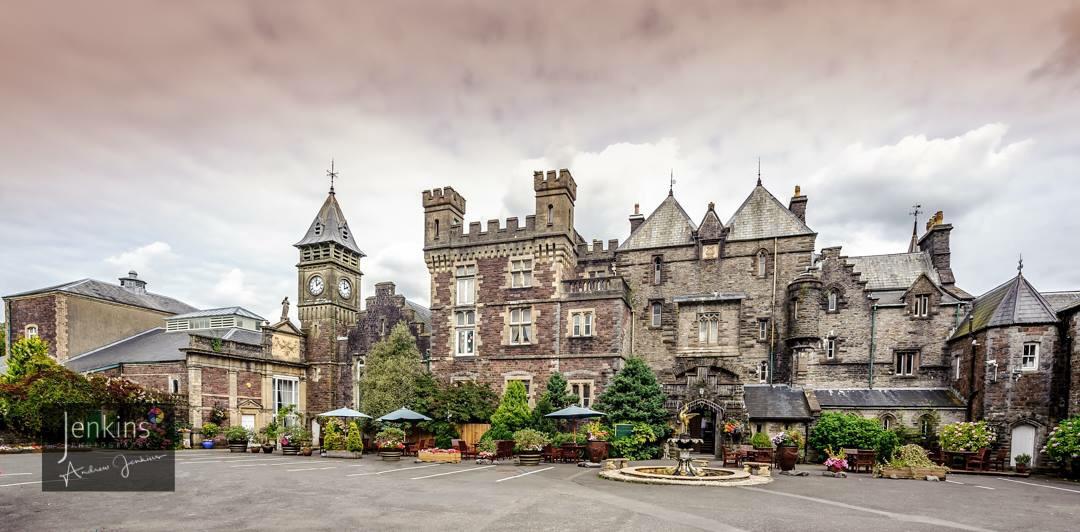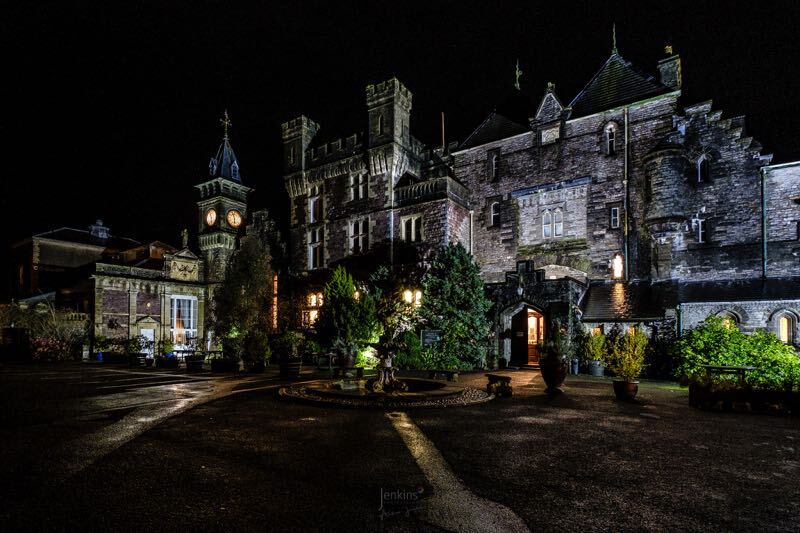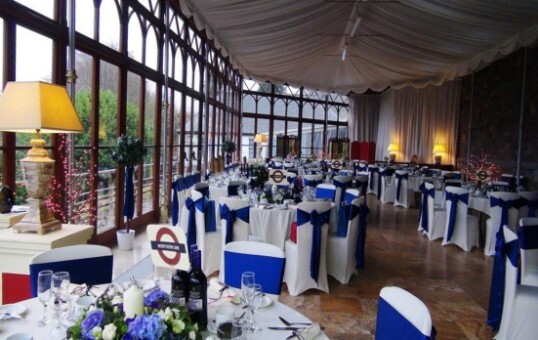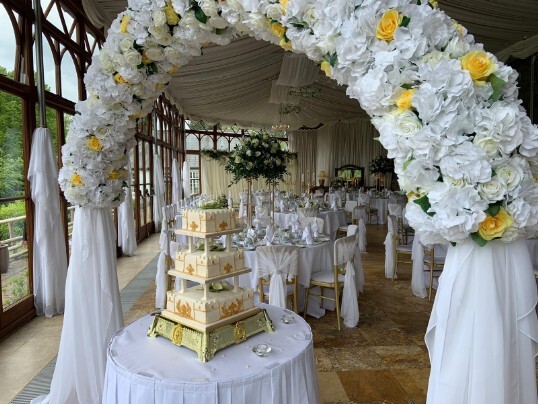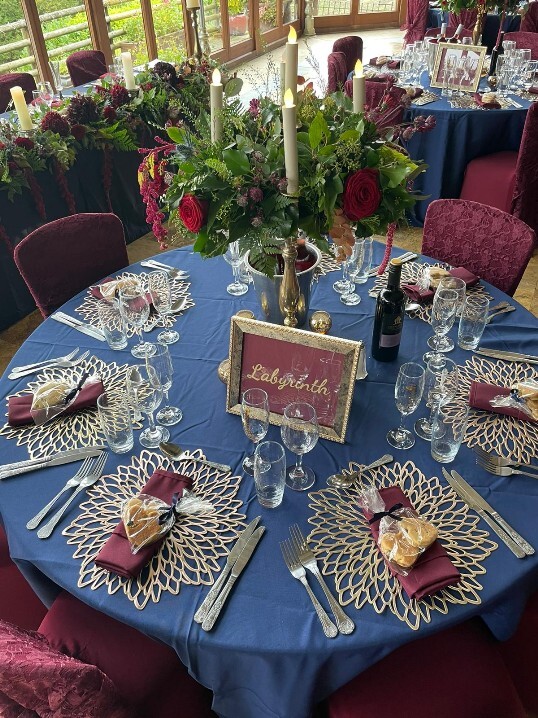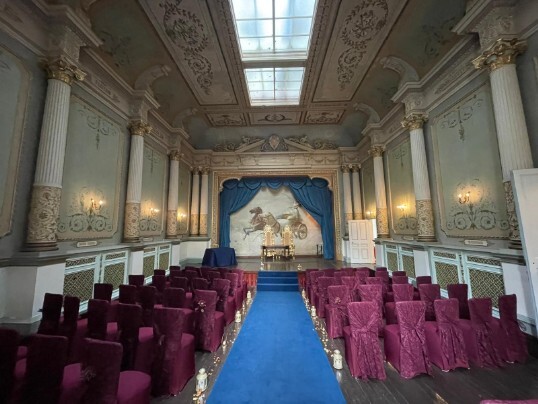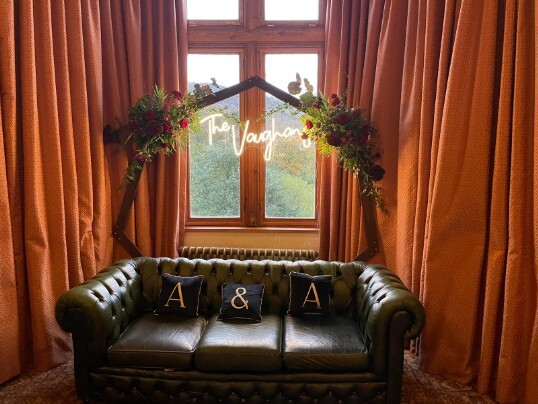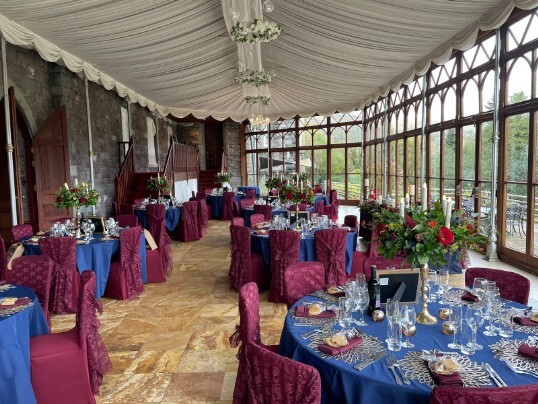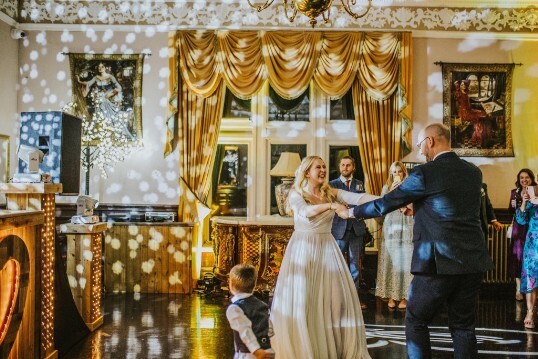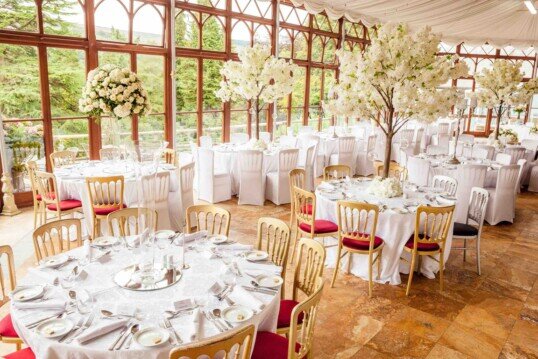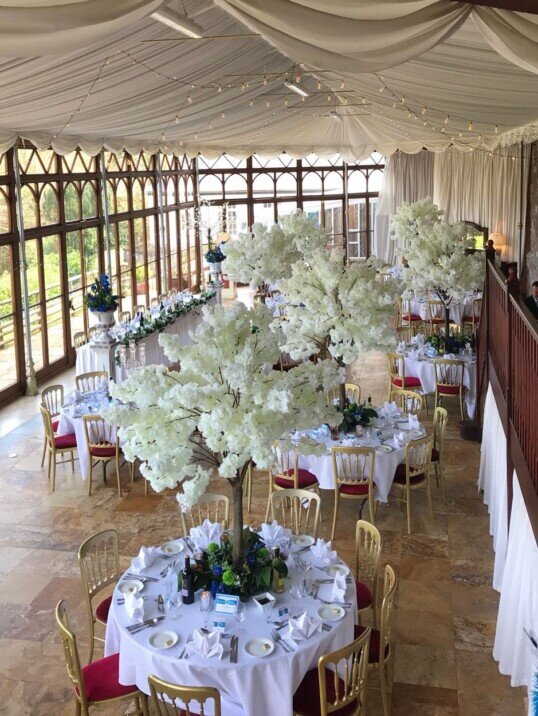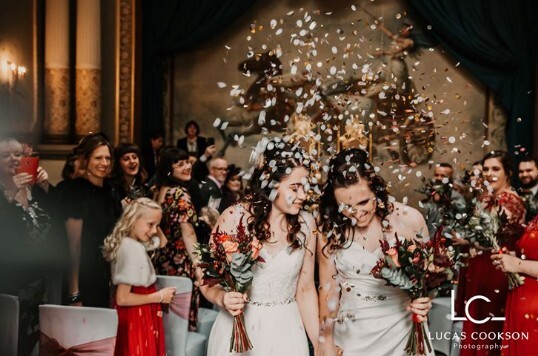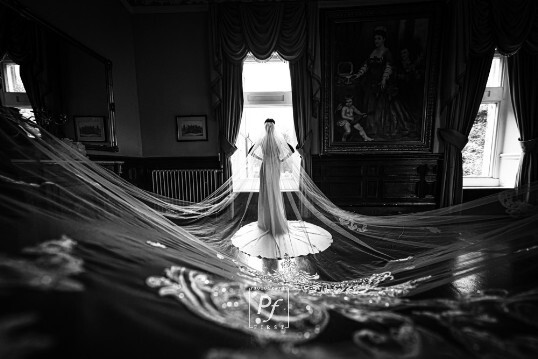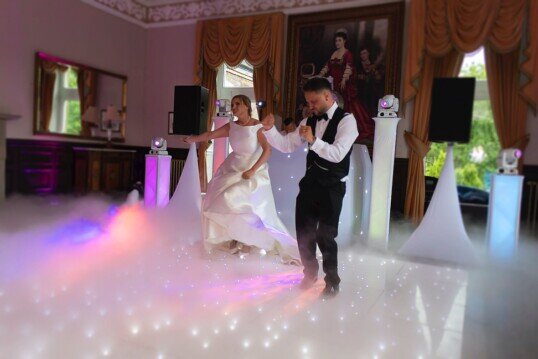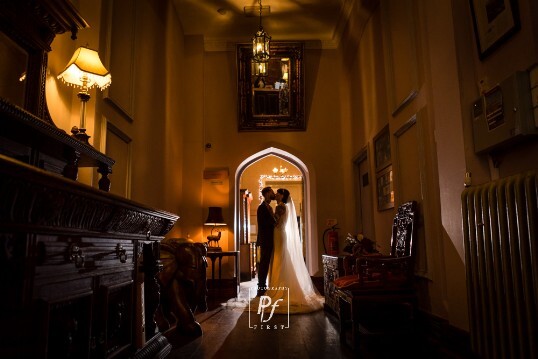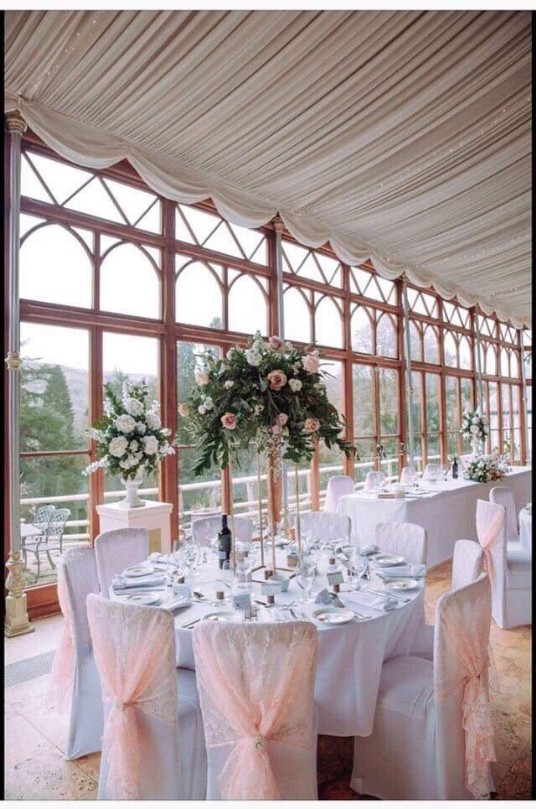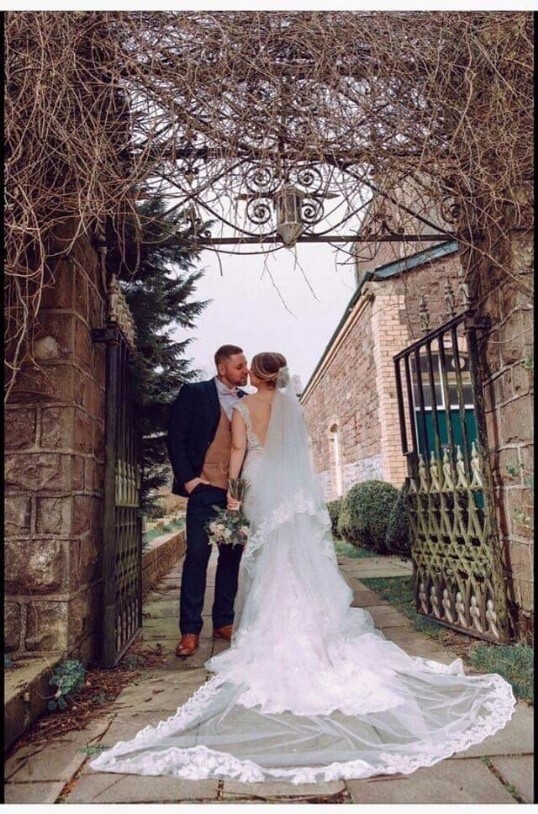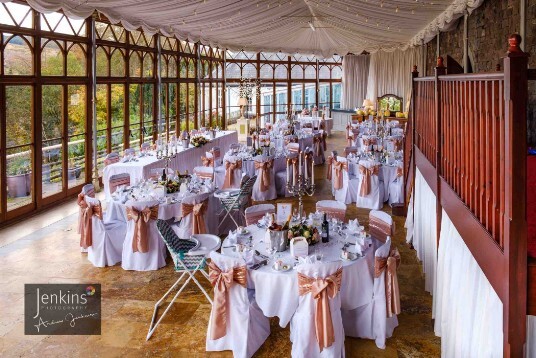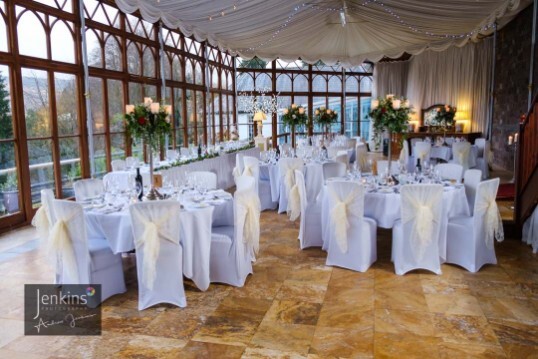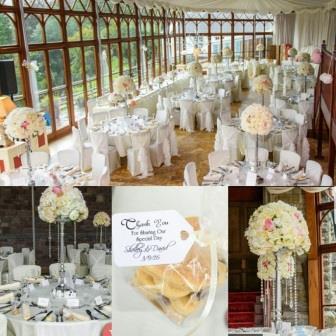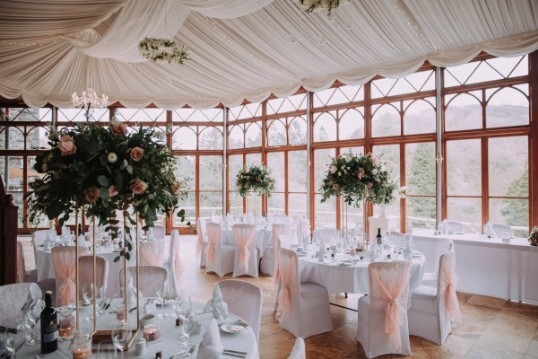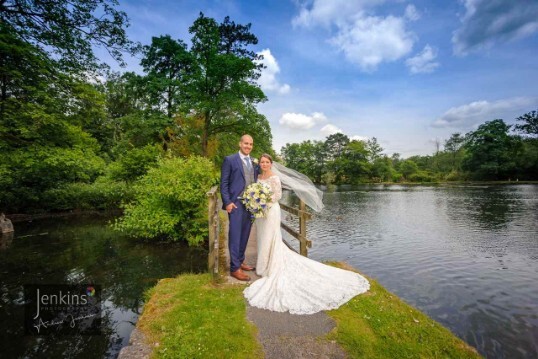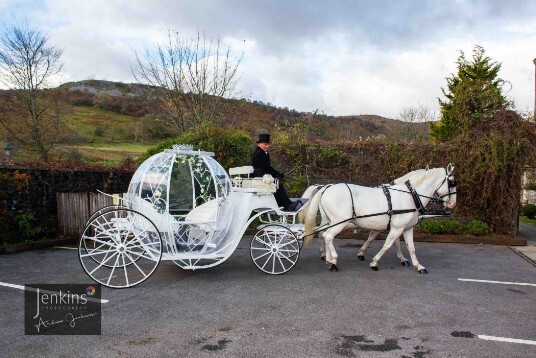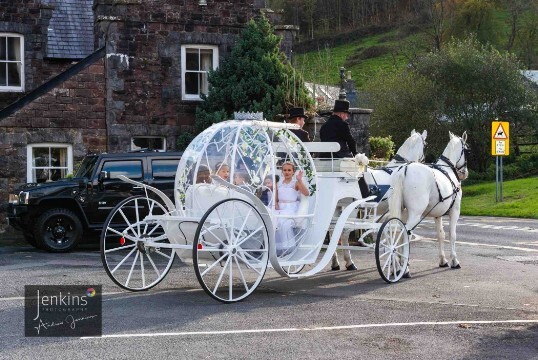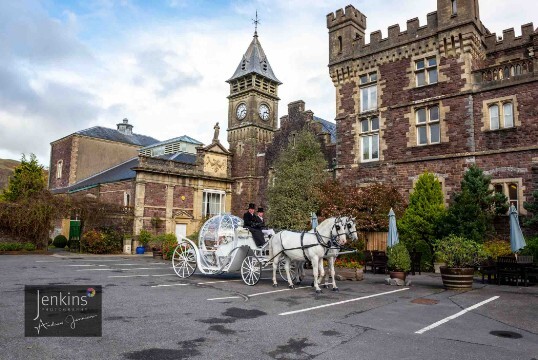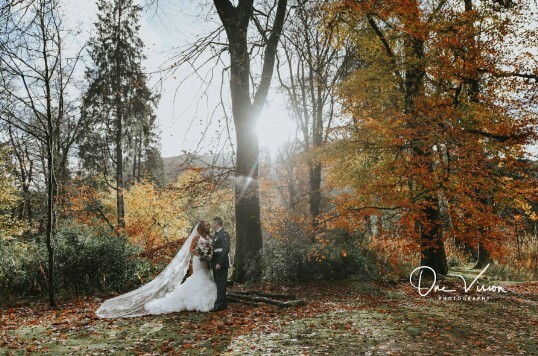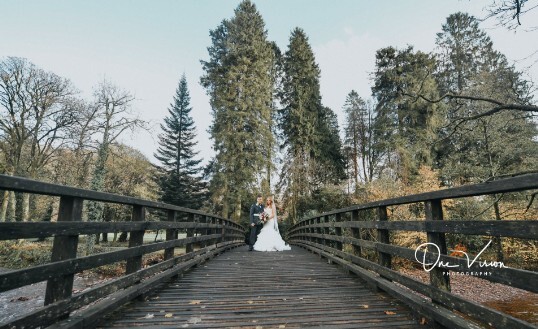Wales Wedding Venues - Craig Y Nos Castle Wedding Venue
Wedding Planning > Wedding themes by Town
London Wedding Venue decor ideas, for Londoners marrying in Wales
London Themed Weddings
in Wales -
enjoy a full two day, two night
for 70 Guests, everything included,
over two days
Worth £28,000
yet you as Wedding Couple pay only £10,300 while this offer lasts - read more
- for a fraction of the cost of a one day Wedding in London!
Your London themed Wedding Reception
in a Castle in Wales
- all yours for your Day
or for a full weekend wedding
"We only allow one wedding a day in the castle, so
our Castle is exclusively yours for your wedding day"
This sets our castle apart from wedding venues in South Wales who have more than one wedding on same day.
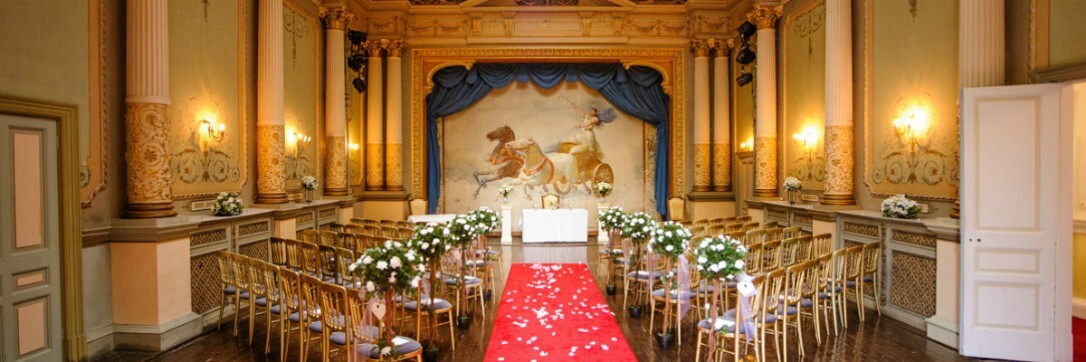
- Time from London to Craig y Nos Castle Wedding Venue: 3 hours 24 minutes
- Distance from London to Craig y Nos Castle Wedding Reception Venue: 191 miles
Exclusive Use
Londoners' Wedding Packages
in a Welsh Castle
- a stunning Wedding Venue
at a fraction of the cost
of a London Wedding
Visit on one of our
Discounted overnight stay,
Champagne Dinner & Menu Tasting, with B&B & History Tour
for anyone visiting from London
Only £149 D, B&B for two - read more

Award winning Castle Wedding Venue in South Wales for your big day!
See our Wedding Packages
See our Weekend Wedding Package with 60 to 70 day guests and 50 guests staying overnight.
See our amazing two day full weekend VIP Wedding Offer.
See our Last Minute Weddings Offers.
For all our wedding packages, see Wedding Packages Selection for the most suitable wedding package for you.
Why Choose Craig y Nos Castle,
3 1/2 hours from London?
All your guests can stay overnight with you on your wedding day. Party late into the night, with no worries about you or your guests getting back home to London.
Craig y Nos Castle wedding venue sleeps up to 81 guests in en-suite doubles and family rooms.
We're probably the only castle wedding venue where all your guests can stay overnight.
A unique Wedding Venue - the romance of a real Welsh Castle combined with the historic grandeur of our very own Opera House licensed for wedding ceremonies.
Craig y Nos Castle only accepts one wedding a day, so you and your guests from London will have the run of the whole ground floor of the castle exclusively.
You're not in just one room, you and your guests have the run of all our ground floor rooms:
(1) The opera house for your wedding ceremony, where you will be the star of the show, on stage, before all your guests
(2) Welcome drinks in the Nicoloni Room, our main reception lounge (or outside in gardens if weather is fine)
(3) Your wedding breakfast in our 130 seater conservatory with fabulous views overlooking the Brecon Beacons National Park
(4) Evening wedding party and late night disco in our evening function room and music room, with resident's bar.
Should you 'go local',
for a wedding venue
in or near to London Town,
or can you go further afield
in or near to London Town,
or can you go further afield
for a more special and unique wedding day?
'Local Venue'
or
'Destination Wedding Venue'?
You may have guests some distance away from London, who'll need to travel to your wedding anyway, so it won't matter to them so much where you get married.
For guests who live local to you, friends and neighbours and acquaintances and even work colleagues in and around London, do you want a local wedding venue near London where all your guests can get to easily?
Or are you all happy about travelling to South Wales maybe for a full weekend wedding (two nights, two days) at Craig y Nos Castle? Where you can book a £28,000 value two day wedding, and yet pay only around £10,300 as the wedding couple (this is because your guests pay for their own B&B).
Will you invite
'Evening Only' Guests
or invite everyone for the whole day?
'Evening-only' guests won't travel far. Craig y Nos is more of a 'destination wedding venue', where your closest friends and relatives come to your wedding, and where you invite everyone for the whole day.
When you choose a venue further away from your base, you'll tend to invite everyone for the whole day. Also you'll need somewhere all your guests can stay overnight.
Craig y Nos Castle sleeps over 8o guests. Have most of your guests stay with us. Everyone will party with you late into the night as they have no worries about getting home.
At Craig y Nos Castle you get exclusive use of a whole castle for your full weekend wedding, for two whole days, for a fraction of the cost of a one day wedding in London.
Unlike with a 'local' wedding reception, when you marry at Craig y Nos, you won't have so many guests shooting off early to get home. With more local weddings nearer to London, a wedding party dwindles around 11-12 as guests leave to go home. And with the trains being unreliable, you may as well have everyone drive from London to the Castle and make a full weekend break of it.
Unlike with a 'local' wedding reception, when you marry at Craig y Nos, you won't have so many guests shooting off early to get home. With more local weddings nearer to London, a wedding party dwindles around 11-12 as guests leave to go home. And with the trains being unreliable, you may as well have everyone drive from London to the Castle and make a full weekend break of it.
How special is that?
Having everyone stay over at Craig y Nos means your party lasts late into the night.
A truly magical and unique
castle wedding venue
Craig y Nos Castle is a popular destination wedding venue for couples all over the UK. It combines the attraction of getting married in a real castle, in your own fairytale castle for either a day or a whole weekend, a historic building (yours exclusively for your wedding) in an area of outstanding natural beauty.
The mountain scenery of the Brecon Beacons National Park guarantees you stunning photo opportunities both inside and outside the castle. The Grade One Listed Opera House makes a fantastic setting for your wedding ceremony. You get exclusive use of the whole ground floor of the castle for you and your wedding guests.
Hosting over 100 weddings a year, Craig y Nos Castle is a truly magical and unique castle wedding venue for Brides and Grooms with reasonable and affordable rates.
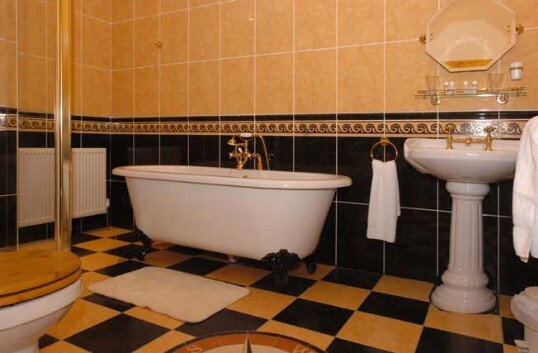
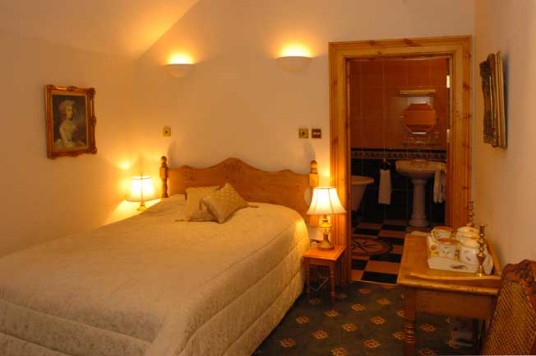
![]()
London Wedding Theme ideas, Wedding Decor
and Wedding Gift Ideas,
based on London's history, style and culture
Link your wedding theme, wedding decor and wedding favours to the history, style and sense of place in London or more specifically, your own area of London.
Your wedding theme may be linked to your own past, to key moments in your relationship with each other, your favourite colours, your personal tastes, or you may incorporate some elements of your home area within London into your wedding day 'story book'.
When considering wedding decor you may already have plenty of your own ideas for your wedding. Or maybe you are still looking for inspiration?
Reflect the story of the capital city in your decor, to connect your personal history in your home city's roots, and your family's location in London. You may get some ideas from the quick history of London below, its buildings, street names, or local transport routes etc.
Population and Size
1. London was the first city to reach a population of more than one million, in 1811. Population of London today: 8,308,369. Population density: 11,760 /square mile in Greater London. London's population peaked at 8,615,245 in 1939 immediately before the Second World War, but reduced to 7,192,091 by 2001 only to jump by a million to 8,173,941 in 2011's census, mainly fuelled by immigration.
2. The extended region known as the London Metropolitan Region has 13,709,000 people within an area of 3,236 square mles (8,832 square kilomedtres).
3. London is the largest city in the European Union and had the largest London population of any city in the world between 1831-1925 (when it was overtaken by New York and later Tokyo), holding 12.5% of the UK's total population. London is currently the 19th largest city in the world.
4. 60% of Londoners are white, 21% Asian of which Indians are 6.6%, and 15.6% Black, and 5% are mixed race. 36.7% of London's population was born outside the UK.
5. Until 1889, the name London only referred to the 'City of London', which retains its medieval borders and is the smallest city in England with a population of 7,375. Now London refers to the Greater London Area and is becoming generally recognised (almost) as everything within the M25.
6. The River Thames splits London into two distinct halves - North London (which is considered the main part of London or London proper by those living North of the Thames) and South London with predominantly suburban commuter areas. This view of those North of the Thames is reinforced by the fact that of the 287 London Underground stations, only 29 are south of the river Thames.

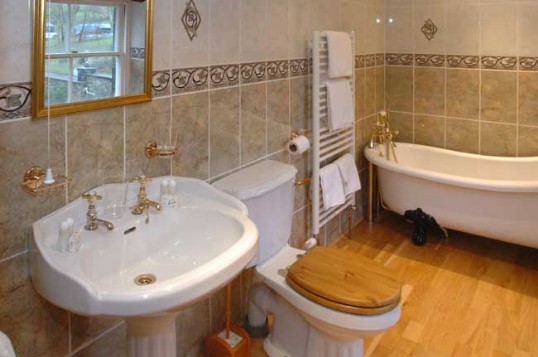
History
7. London's recorded history goes back 2,000 years to the time of the Romans when it was known as Londinium. However settlements existed for many thousands of years before then, confirmed by the 2010 discovery of a former timber building's foundations dating back to 4500 BC which was found at Vauxhall. The Romans' first settlement of 43 AD was shortlived, burnt to the ground by Queen Boudica, but Londinium was re-established in 100 AD and by the C.2nd had 60,000 population.
8. When the Romans left in the C.5th, the walled city of Londonium was abandoned. The Anglo-Saxons settled in the area and by 700 London had revived as a major port, though from AD 820 the Vikings kept attacking it. London remained relatively small till 950 AD, but by the C.11th it was England's largest town.
9. William Duke of Normandy became king in 1066 and built the Tower of London and Westminster Hall (now the Houses of Parliament). The Royal Treasury moved from Winchester to the Tower of London.
10. London lost a third of its population in the Black Death of the mid C.14th. By 1565 with trade routes opening up, London became the main North Sea Port. Monopoly trading companies such as the East India Trading Company were established.
11. The Great Plague of 1665 killed a fifth of the population, followed in 1666 by the Great Fire of London and the rebuilding of London over the next ten years.
12. Few structures in central London pre-date the Great Fire - the main ones being the Tower of London and the Tudor period Hampton Court Palace. However South London escaped the flames as the Fire did not cross the Thames. 370 acres of the City of London, 13,000 houses, 84 churches and more than 40 halls were destroyed by the fire. After the Fire, London's mostly wooden buildings were replaced with stone built buildings. Christopher Wren designed St. Paul's Cathedral, completed in 1708. New areas of London such as Mayfair were created, and the South of London was opened up with more bridges across the Thames.
13. The world's first police force, the Bow Steet Runners, were established in London in 1750. London was rife with crime and punishments harsh. 200 offences were punishable by death and woman and children were hanged for petty theft. At this time 74% of children died before the age of 5.
14. The Coffee Houses became popular meeting and debating places, and the development of the printing press saw Fleet Street established as the centre of British newspapers.
15. The German Luftwaffe blitzed London in WW2, killing 30,000 people and destroying much of the city.
16. The Great Smog of 1952 led to the Clear Air Act 1956, ending the pea soup fogs for which London had become infamous.
17. From the 1940's London became home to a large number of immigrants from Commonwealth countries including Jamaica, India, Bangladesh and Pakistan, making London one of the most diverse cities in Europe.
Some curious facts
you probably do not know
about London
1. Victorian Churchmen warned against building the London Underground because the noise of the trains might wake up the Devil.
2. Until the early 1950's anyone could ring the Prime Minister in his home, because his number was listed in the phone book.
3. A pensioner got lost on the M25 and could not find the right exit, so went round and round it for 48 hours. It takes about an hour and a half to get round the M25 assuming no traffic jams, so the pensioner must have gone around it about 30 times.
4. Covent Gardent was so named due to a mis-spelling of the word 'Convent'; it used to be the market garden for the convent of Westminster Abbey.
5. Marble Arch stands near the former Tyburn Tree, where 50,000 people were hanged/ executed over the years.
6. The original London Bridge was in use for 600 years, with heads impaled on spikes for 355 of those years.
The current London Bridge, opened in 1973, is the third with that name to span the Thames.
The first stood from 1209-1831 and famously contained houses and shops.
The second by John Rennie, built to replace the original, lasted until 1968, when it was sold to an American entrepreneur. It is often confused with Tower Bridge, which is the one we see in photos of London.
Those going north had to cross on the west lane (the left if looking North) and those going south, on the east lane (the right if looking North), and this directive created the rule of 'driving on the left' we have in the UK today.
7. The original London Accent (before it became multi-cultural) is known as 'Cockney', but for hundreds of years the word 'Cockney' was an insult.
8. Only six people died in the Great Fire of London. More (7) died falling or jumping off the monument to the Fire, before the safety rail was built.
9. The Monument at 62 metres (202 feet) high, is the tallest stone column in the world. Its height is equal to its distance from where the Great Fire started, in a bakery in Pudding Lane. You can climb to the top - it has 311 stairs.
10. There is a secret and very large military citadel beneath Whitehall with an entrance near Trafalgar Square. Also there are 12 miles of Cold War-era tunnels running beneath central London, each 16 feet wide.
11. Medieval London had some curious street names including Shiteburn Lane, Pissing Alley, Gropecunt Lane.
12. You could buy pure cocaine at Harrods up until 1916.
13. The London Eye has 3.5 million customers a year, carrying 800 passengers per revolution.
Sounds a lot but that's only 12 revolutions a day if it was completely full each time!
As each full revolution takes 30 minutes, the most it can do in a day is 48 full revolutions, but at least it is slow enough to let customers on and off without having to stop.
14. British Airways was involved in erecting the Eye but had problems, so rival Virgin flew an airship over it that said, "BA Can’t Get It Up!"
15. Heathrow Airport got its name from the sleepy hamlet that used to be there, called 'Heath Row'.
16. Canary Wharf is so called because the harbour that was there used to handle cargo from the Canary Islands.
17. The world's first traffic light was erected outside the House of Commons in 1868. It blew up in 1869. It used coloured gas lamps at night (red & green) and needed a policeman to operate it. A leaky gas main caused the explosion and the policeman was badly burnt. The project was shelved and the next traffic lights to appear were 40 years later, in the USA.
18. St Thomas' Hospital used to have seven buildings, one for each day of the week, so that staff knew on which day patients had been admitted.
19. The exact centre of London is in the Church of St Martin's-in-the-Fields overlooking Trafalgar Square.
20. St Bride's Church in Fleet Street has a tiered design which was the inspiration for the tiered wedding cake.
21. Mayfair is named after a fair that used to be held in the area every May.
22. Bedlam (meaning noise and confusion) Hospital, the world's oldest institution caring for the mentally ill, was founded in 1247; it is now the Bethleham Royal Hospital. The hospital has moved and the original building is now the Imperial War Museum.
23. In 1926, John Logie Baird demonstrated how television would work in what is now Bar Italia in Frith Street, Soho.
24. The Houses of Parliament have 1,000 rooms, 100 staircases, 11 courtyards, eight bars and six restaurants - none are open to the public.
25. The Palace of Westminster was sited by the river so it could not be totally surrounded by a mob.
26. It is illegal in London to have sex on a parked motorcycle, beat a carpet in a public park, or impersonate a Chelsea pensioner - the latter offence is punishable by death.
27. Marble Arch was designed by John Nash in 1828 originally to be the entrance to Buckingham Palace, but it was moved to Hyde Park.
28. Tea first came to London in 1658.
29. The world's first street lighting was installed in Pall Mall in 1807.
30. The Communist Manifesto was first published by Karl Marx and Friedrich Engels in German in London's Liverpool Street in 1848.
31. Buckingham Palace was built (in 1702) on a brothel.
32. The first monarch to use Buckingham Palace as their official residence was Queen Victoria, who moved there in 1837. It was originally a private house built by the Duke of Buckingham. It has 800 staff.
33. The world's first ever traffic island for crossing a road was installed in 1864 so its inventor Colonel Pierpoint could reach his social club. When he turned round to admire his new island, he tripped and was knocked down by a taxi.
34. Why are the Police known as 'the Old Bill'? Inspectors of the new Metropolitan Police carried pistols whereas constables were only allowed to carry truncheons. The truncheon had a band of copper at one end, giving rise to the name 'Coppers' for the police today, and the royal monogram WR at the other (for William IV) is the source of the police's nickname 'Old Bill' (Bill is slang for William).
35. The Bank of England has more rooms and floor levels, vaults and cellars, excavated below ground than even the tallest London skyscrapers have above ground.
36. In England cars drive on the left, with one exception. You have to drive on the right when in Savoy Court. An Act of Parliament was passed to make this law, so ladies, who in those days sat behind the driver when in a horse and carriage, could alight from their carriage on the pavement side to enter the Savoy Hotel.
37. Amongst others, London is twinned with Moscow.
38. Big Ben is the bell, not the clock. The Tower has been called variously the Clock Tower, Big Ben Tower, and (wrongly) St Stephens Tower (St. Stephens Tower is actually on the West Side of Parliament and is the public entrance to Parliament). It has now been renamed The Elizabeth Tower after the Jubilee.
39. London Underground has its own unique breed of mosquito - Culex pipiens f. molestus. The species do not exist anywhere else.
The London Underground species of mosquito is different in that it breeds all-year round, is cold intolerant, and bites rats, mice, and humans, in contrast to the above-ground species, which is cold tolerant, hibernates in the winter, and generally bites only birds.
The mosquitos are thought to have come in on suitcases from Heathrow airport, and then evolved into a new species that can survive year round because of the warmth (they would not survive above ground in winter).
They were the bane of Londoners sheltering in the tubes during the blitz.
Biologists named the London Underground mosquito Culex pipiens f. molestus due to its voracious biting.
40. London has 21,000 taxis. They're not all black as 6 different colours are allowed.
41. It is illegal to die in the Houses of Parliament.
42. Dr. Who's TARDIS is outside Earl’s Court station.
43. The Crown Jewels housed in the Tower of London are worth over £20 billion.

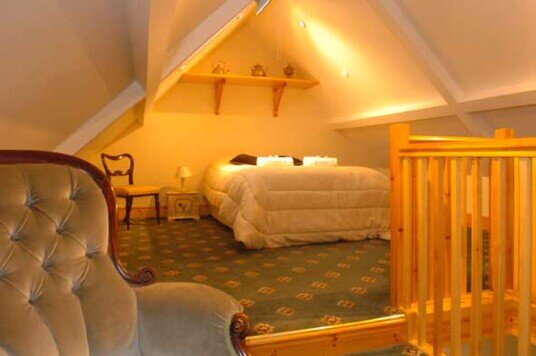
More Curious facts about London
44. Edward V and Richard, Duke Of York were imprisoned in the Tower by their uncle, who became Richard III (recently excavated from a car park). He had the two boy princes killed so he could succeed to the throne. The ‘Princes in the Tower’ legend was quite recently confirmed when the bones of two young boys were found in a chest in the Tower. They also haunt the Tower.
45. The phrase "one for the road" - popular before drink driving laws were more rigorously enforced, originates from prisoners being led from the Old Bailey to be hung at Tyburn Tree (at what is now Marble Arch). A landlord of an old pub on Oxford Street would give the prisoner one drink before they were to be hung, hence the phrase "one for the road".
45. The phrase "one for the road" - popular before drink driving laws were more rigorously enforced, originates from prisoners being led from the Old Bailey to be hung at Tyburn Tree (at what is now Marble Arch). A landlord of an old pub on Oxford Street would give the prisoner one drink before they were to be hung, hence the phrase "one for the road".
46. The Millennium Dome is the largest dome in the world and the largest single roofed structure. Its design reflects Greenwich’s connection with time measurement: it is 365 metres in diameter and 52 metres high in the middle and has 12 supporting poles, symbolizing the days, weeks and months of the year.
47. Westminster Bridge is painted green to match the seat colour of the House of Commons.
48. The most expensive flat in the world at One Hyde Park costs £135.4m and has its own SAS guard, bullet-proof glass, panic rooms and a secret tunnel to a nearby hotel.
49. Wembley Football Stadium in Wembley, North London is the largest football stadium in the world.
50. There is a secret tunnel under St James Park linking Buckingham Palace to Charing Cross Station. This was built in 1939 so the Royal Family could escape if there was an invasion in WW2. From Charing Cross they would take a train to Paddington, from there to Bristol, and from there sail to Canada where they would live in secret in some remote area. This tunnel does not officially exist.
51. Kings Road in Chelsea is so-named because it was the route King Henry VIII used to take from Westminster to Hampton Court Palace.
52. We all celebrate Guy Fawkes Night on November 5th. But so great was the nation-wide reaction to the Gunpowder Plot of 1605 that, even to this day, yeoman of the guard search the basement of Parliament at every state opening.
53. In 1908, the Russian Olympic team arrived 12 days late to the London Olympics because they were still using the Julian Calendar.
From the 1500′s most Roman Catholic countries adopted the Gregorian Calendar over the Julian Calendar which had been introduced by Julius Caesar in 45 BC. Protestant England used the Julian Calendar until 1751.
Orthodox countries took longer still and Russia did not change over until 1917).
See more curious facts about london here!
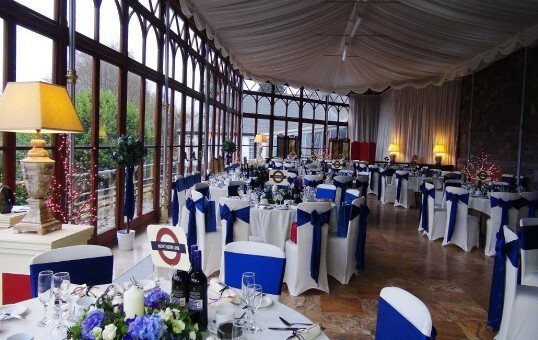
London Based wedding themes
many ideas for you to choose from
1. Create table centre pieces based on pictures of, or better still, mini sculptures of each of the main London Buildings or main London landmarks – e.g. Tower of London, Houses of Parliament, London Bridge, London Eye, Shard, Canary Wharf, Buckingham Palace, St. Pauls Cathedral, British Library, Nelson’s Column, Millennium Dome etc. It should be possible to buy models of each of the above on line, so making each of your table centres unique.
2. Use the London Tube Signs for your wedding tables. This has been done by one London wedding couple as can be seen in the pictures of the blue themed Wedding Breakfast Table and Chair decorations on this page.
3. Base your table names and signage on the districts and some of the boroughs of London – e.g. Mayfair, Kensington, Soho, West End, Belgravia, Chelsea, Maida Vale, Hampstead, Westminster, Victoria and so on.
4. Table names via the more major above ground stations – Paddington, Victoria, Kings Cross etc.
5. If you are into wide open spaces and Country Parks, you could base all your table names on London’s Country Park names. E.g. Hyde Park, Kensington Gardens, Regent's Park, Green Park, St. James Park. Greenwich Park, Bushy Park, Richmond Park and Victoria Park.
6. Make up a Curious Facts sheet for each table based on London as a whole, for which you could use the information on this page.
7. Or you could do some more detailed research of your own and look up curious facts about each of the specific areas, area names, boroughs or train station names featured on your wedding guest tables, depending which names you have chosen for your Wedding Tables. So each table could have its own individualised ‘curious facts’ information sheet.
8. Look to the Monopoly Board for inspiration, themes and place names for your wedding tables.
9. Base your wedding favours and gifts ideas on the unique area or place names chosen for your table settings. So if you chose London Transport, buses or tubes, as your wedding theme, then the wedding favours would be train sets for the children, and bus and trani memorabilia and jewellery for the adults.
10. Create a family tree modelled on the London tube map.
11. Model your wedding table themes and place settings on the various bridges over the Thames, tying in with the idea of marriage creating a connection or bridge between two families.
12. Many wedding couples these days create a large board with photographs of the bride and groom through the years from babyhood, through childhood, to adulthood. You could vary this theme by having a historical photos gallery with a London theme and pictures in the background.
13. Or if you are both from London or have strong connection with London, you could choose pictures of yourselves as a couple in various locations, stations, in front of famous buildings or well known locations, in and around London. Under each picture of you together in a particular location you could have an interesting fact about that specific location, so people do not just look at the pictures and move on; they can read and study the board and get some interesting information from it.
More London Based wedding themes -
for wedding favours, wedding gifts and wedding decor ideas
14. Probably not something you could do, unless you decided to introduce a more jovial theme to your evening buffet room tables, but you could name some tables based on the old ‘rude’ street names of London – e.g. Shiteburn Lane, Pissing Alley.
15. At Craig y Nos Castle you do have two separate rooms for your wedding – a day room for the wedding breakfast and an evening room for the disco and party. This means you are able to decorate the evening function room with a different London based party theme, expanding on the London theme you have introduced to your wedding breakfast in the Conservatory.
16. A small wedding might feature the London Taxis, with a different colour for each table’s taxi. But as you are limited to six different colours, this means you would be limited to six wedding breakfast tables. Also the colours may be rather similar.
Modern Times
Transport
18. Around 450,000 students attend London's 43 universities - the highest concentration of higher education in Europe and possibly the world.
19. London is the only city (so far) to have hosted the modern Summer Olympic Games three times.
20. 300 languages are spoken within London.
Transport
21. The London Underground is the oldest underground railway network in the world, started in 1863. It is also the costliest.
22. In 1926, suicide pits were installed beneath tracks on the London Underground due to a rise in the numbers of passengers throwing themselves in front of trains. The most popular time for suicides is 11.00 am.
23. To discourage unruly young people from loitering in the tube stations, classical music is played.
24. The London undergound handles 3 million passengers daily. This means a billion journeys a year are made on the London tube.
22. In 1926, suicide pits were installed beneath tracks on the London Underground due to a rise in the numbers of passengers throwing themselves in front of trains. The most popular time for suicides is 11.00 am.
23. To discourage unruly young people from loitering in the tube stations, classical music is played.
24. The London undergound handles 3 million passengers daily. This means a billion journeys a year are made on the London tube.
25. The London Bus Network, with its recognisable London red buses, comprises 7,500 buses handling 6 million passengers a day, double that of the London Underground.
26. With 270 stations the Tube is the second largest in the world. London is regarded as having the best public transport in the world.
27. The 195.5 kilometres (121.5 miles) long M25 circling around London is the longest ring-road motorway in the world.
22. In 1926, suicide pits were installed beneath tracks on the London Underground due to a rise in the numbers of passengers throwing themselves in front of trains. The most popular time for suicides is 11.00 am.
23. To discourage unruly young people from loitering in the tube stations, classical music is played.
24. The London undergound handles 3 million passengers daily. This means a billion journeys a year are made on the London tube.
22. In 1926, suicide pits were installed beneath tracks on the London Underground due to a rise in the numbers of passengers throwing themselves in front of trains. The most popular time for suicides is 11.00 am.
23. To discourage unruly young people from loitering in the tube stations, classical music is played.
24. The London undergound handles 3 million passengers daily. This means a billion journeys a year are made on the London tube.
25. The London Bus Network, with its recognisable London red buses, comprises 7,500 buses handling 6 million passengers a day, double that of the London Underground.
26. With 270 stations the Tube is the second largest in the world. London is regarded as having the best public transport in the world.
27. The 195.5 kilometres (121.5 miles) long M25 circling around London is the longest ring-road motorway in the world.
28. In 2003, a congestion charge was introduced to reduce traffic in the city centre. Motorists pay £10/ day to drive within central London which did reduce traffic in the centre by 35%. However congestion in London is still a problem: the average speed of traffic is 10.6 mph in rush hour.
Thames and Tides
29. The Thames used to be an open sewer where all waste from London ended up. No fish lived. In 1858 the stench became so bad it was known as "The Great Stink". Cholera was also a problem and at first it was not understood to be connected with the polluted water. The Victorians built proper sewers and drainage and with recycling and treatment of waste water it is said that Londoners may drink the same water on average 7 times.
30. The Thames Barrier was built in the 1980s to protect London against tidal surges from the North Sea. The Thames river used to swell at high tide to five times its low tide width but as London developed, embankments were built either side and many of its tributaries and up to 20 rivers were diverted underground. The Tyburn River has been diverted underground and runs under Buckingham Palace. The Westbourne River runs along a tunnel which can be seen from Sloane Square Tube station. The Fleet River runs under the cellars of the Cheshire Cheese Pub on Fleet Street.
31. Because London is a tidal river, London is at risk of flooding. Global warming is feared as a possible cause of rising sea levels. However London has another problem; water levels are slowly increasing because Britain as a whole is 'tilting up' in the north and dropping down in the south due to 'post glacial rebound'. Apparently northern Britain is springing back into position after being 'weighed down' by ice during the Ice Age. The Thames Barrier will need expanding by 2070 to counteract this threat.
Government
33. The larger Greater London Area is governed by the Mayor of London and the London Assembly and covers 611 square miles (1583 square kilometres). Greater London's expansion has eaten into part of the historic counties of Middlesex, Kent, Surrey, Essex and Hertfordshire.
34. Westminster Abbey was built by Edward the Confessor, and London became the capital of England in place of Winchester which had been the capital hitherto. However London has never officially been confirmed as the capital of Great Britain by any statute. Up to the C.12th the Government had moved around the country with the King's court, having no fixed abode. In the C.12th the Palace of Westminster developed into a centre of Goverment while the City of London remained a place of trade and finance.
35. The Greater London Council was abolished in 1986, due to Margaret Thatcher's hatred of its Leader, Ken Livingstone, but in 2000, London-wide government was restored under the Greater London Authority.
36. Many government departments are located close to Parliament, principally in Whitehall, including the Prime Minister's home at 10 Downing Street.
37. The British Parliament is accepted as the "Mother of Parliaments" because it has been the model for most other parliaments and many other democracies.
38. London has 32 boroughs: City of London, City of Westminster, Kensington and Chelsea, Hammersmith and Fulham, Wandsworth, Lambeth, Southwark, Tower Hamlets, Hackney, Islington, Camden, Brent, Ealing, Hounslow, Richmond, Kingston, Merton, Sutton, Croydon, Bromley, Lewisham, Greenwich, Bexley, Havering, Barking and Dagenham, Redbridge, Newham, Waltham Forest, Haringey, Enfield, Barnet, Harrow, Hillingdon.
39. London has a great many separate districts, independent of the borough boundaries, some of which are very expensive, such as Mayfair, Kensington and Chelsea, Bloomsbury, St. Johns Wood, Hampstead. Others are less ruinously expensive but still pretty expensive, such as Hammersmith and Maida Vale, Chiswick and Ealing, while others such as Islington and Stoke Newington which were once considered up and coming have now become too expensive also. There are also some poorer areas, such as Kilburn, Tower Hamlets, Queens Park etc, though generally all of London is just getting more unaffordable. Each of these districts has its own distinctive character and culture and some are peopled by distinct ethnic groups.
40. London is now one of the top three most expensive cities in the World, the other two being Moscow and Tokyo. London is 4th in the world in terms of the number of billionaires.
Buildings
42. The 72-storey Shard at London Bridge is currently the tallest building in the European Union.
43. The largest parks in the central area of London are Hyde Park, Kensington Gardens and Regent's Park which contains London Zoo, the world's oldest scientific zoo. Smaller Parks close to the centre of London include Green Park and St. James Park. Further from the Centre, to the South there is Greenwich Park, Bushy Park, Richmond Park and Victoria Park, while to the North there is Hampstead Heath.
44. To celebrate the 21st century, the Millennium Dome, London Eye and Millennium Bridge were built.
Business
45. London generates 20% of Britain's GDP., or 30% if counting the London Metropolitan area.46. Financial services are the biggest sector in London, employing 325,000 people with 480 overseas banks. London is the world's top financial centre alongside New York but has been hit by the 2007 banking crisis. London is a leading financial centre and has the 5th highest GDP per capita in the world.
47. In the 1980's after the principal ports for London moved to Felixstowe and Tilbury, the London Docklands area became a focus for regeneration with the Canary Wharf development. The expansion into former wastelands was due to London's increasing role as a major international financial centre during the 1980s. (I remember driving around the wide open spaces of mud and concrete where old warehouses had once stood wondering if I should buy property near the abandoned industrial areas; there were a few large terraced houses there that could be bought cheaply in those days.
48. After finance, the media industry is the next largest sector in London.
49. London is also a major retail centre and has the highest non-food retail sales of any city in the world.
50. The Port of London is the second-largest in the UK, handling 45 million tonnes of cargo annually.
51. London has five business districts: City, Westminster, Canary Wharf, Camden & Islington and Lambeth & Southwark.
52. 350,000 people in London work in tourism. London has 14 million tourists a year, making it Europe's most visited city.
Tourism & Culture
54. From the 1960's London has been a trendsetter for world wide youth culture. Annual events include: (1) The New Year's Day Parade, with fireworks displays at the London Eye, (2) the world's second largest street party, the Notting Hill Carnival held on August Bank Holiday, (3) Big parades including November's Lord Mayor's Show, a centuries-old event celebrating the annual appointment of a new Lord Mayor of the City of London with a procession along the streets of the City, and (4) June's Trooping the Colour, a formal military pageant performed by regiments of the Commonwealth and British armies to celebrate the Queen's Official Birthday.
55. The ten most visited attractions are (1) the British Museum in Bloomsbury with 7 million artefacts from around the world, (2) the Tate Gallery (for modern art) which has now moved to the Tate Modern, (3) the National Gallery at Trafalgar Square housing the British national collection of Western paintings, (4) Natural History Museum in South Kensington, (5) the London Eye, (6) the Science Museum in South Kensington, (7), the Victoria and Albert Museum in South Kensington, (8), Madame Tussauds, (9) the National Maritime Museum, (10) the Tower of London.
56. Leisure and Entertainment is centered on Leicester Square (cinemas) and Piccadilly Circus (theatres) in the West End and Chinatown in Soho. There are 200 shows on in the West End at any one time. Andrew Lloyd Webber, who lives in London, has dominated West End Theatre with his musicals.
57.The Royal Ballet, English National Ballet, Royal Opera and English National Opera perform at the Royal Opera House, the London Coliseum, Sadler's Wells Theatre and the Royal Albert Hall which houses the UK's largest pipe organ. Rock Concerts are held at the 02 Arena (formerly the Millennium Dome), Earls Court and the Wembley Arena. The Beatles recorded their many hits in the Abbey Road studios.
58. Famous bands and musicians from London include: Elton John, David Bowie, Queen, Elvis Costello, Cat Stevens, Ian Dury and the Blockheads, The Kinks, The Rolling Stones, The Who, Electric Light Orchestra, Madness, The Jam, The Small Faces, Led Zeppelin, Iron Maiden, Fleetwood Mac, The Police, The Cure, Cream, Phil Collins and Sade, and punk rock's the Sex Pistols and The Clash among others, each deriving their own distinctive sound from the streets, sounds and rhythms of London.
59. Islington's Upper Street has more bars and restaurants than any other street in the UK.
60. London is an international centre of fashion alongside Paris, Milan and New York. Shopping areas include Knightsbridge where Harrods is based, and Oxford Street which, at one mile long, is the longest shopping street in the UK. Europe.
61. Famous writers decribing London include: Shakespeare, Daniel Defoe, the diarist Samuel Pepys, noted for his account of the Fire of London, and Charles Dickens, whose description of a foggy, snowy, grimy London of street sweepers and pickpockets has shaped people's view of early Victorian London. Arthur Conan Doyle and his Sherlock Holmes stories also helped define how people perceive style and culture of London both then and now.
62. London has been the setting for many films which have defined London in the world's eyes, notably Oliver Twist, Peter Pan, Mary Poppins, Notting Hill, and soap operas such as EastEnders.
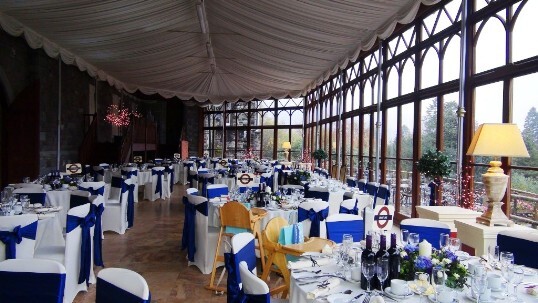
Craig y Nos Castle is set in the Brecon Beacons National Park, with the mountains of the Brecon Beacons providing glorious mountain scenery for guests to admire when seated in the Castle's Conservatory for their wedding breakfast.
This area of Wales has been likened to a mini-Scotland, yet back in 2000 it was only 3 hours drive from London - in the days before speed cameras and roadworks.
This area of Wales has been likened to a mini-Scotland, yet back in 2000 it was only 3 hours drive from London - in the days before speed cameras and roadworks.
When I first saw the castle in 2000, I lived in Maida Vale, London, and was impressed with how accessible the Castle was from West London.
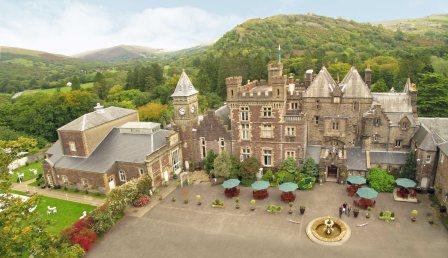
Come and visit for a 2 day B&B break
We are a dog friendly hotel so if you have pets, they can come too. See our separate website www.dogfriendlywales.com if you are interested in dog friendly B&B breaks and things to do and check out all the dog walks in the area.
There is plenty to see and do in the area while you are here - see places to see in the Brecon Beacons area here.
![]()
See last minute weddings offers
Wedding Availability - Years |
Wedding Themes - Towns Index | |
1 | |
2 | |
3 | |
4 | |
5 | |
6 | |
7 | |
8 | |
9 | |
10 | |
11 | |
12 | |
13 | |
14 | |
15 | |
16 | |
17 | |
18 | |
19 | |
20 | |
21 | |
22 | |
23 | |
24 | |
25 | |
26 | |
27 | |
28 | |
Day | Min No's | Wedding Packages |
Sat Fri | 70 60 | |
Sun- Thu | 50 | |
Wedding Package Selector - check which wedding package best fits | ||
Any day | 50 | |
Sun- Thur | 25 | |
Wed only | 40 | |
Any Day | 100 | |
Any Day | 70 | |
Tariffs | ||
![]()
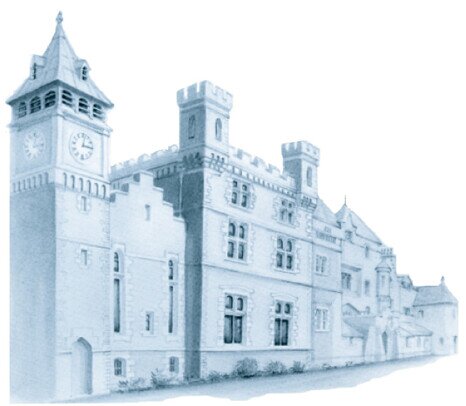
Enjoy a Homely Welcome and Friendly Service at Craig y Nos Castle
